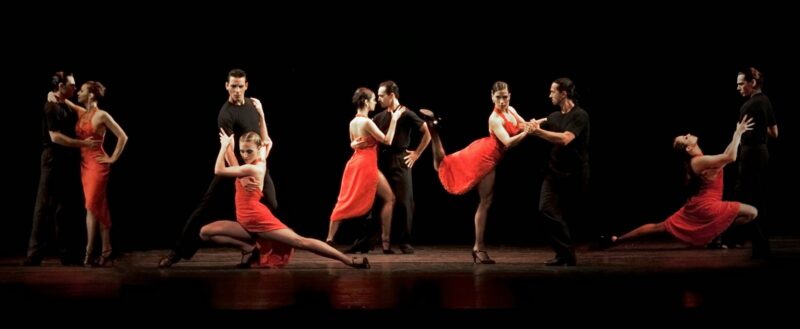Tango Technique
Open and Closed Embrace Tango Technique
All Tango styles except Tango Nuevo and Fantasia can be done in the closed hold. Although Hall and Orillero style Tango dances can be performed in the open hold, it is typically performed in the closed hold in Buenos Aires and other parts of Argentina. Milonguero and Club style Tango dances are performed only in the closed hold. The Milonguero style Tango is also typically performed in a closed hold, and the distance between the woman’s left shoulder and the man’s right shoulder is the same as between the woman’s right shoulder and the man’s left shoulder. Some of the figures described in the Tango Nuevo section can be performed in the slightly trapezoidal, ‘V’ shaped closed hold used in Salon, Orillero and Club style Tango.
Tango Embrace and Frame Tango Technique
Tango Technique: According to some, the difference between Milonguero and other styles of Tango dance is that in Milonguero style the frame is inside the lady, and in other styles the frame is on both dancers’ arms. Whether the frame is in the lady’s or on the arms depends largely on the closeness and softness of the grip. In a firm and distant hold, the frame is in the arms. As the grip gets closer and softer, the frame slides into the woman’s body in every style Tango.
Ric-Tic-Tic Rhythm – Tango rhythm
Tango Technique: The Ric-Tic-Tic rhythm is a way of describing prominent rhythmic elements in Tango music performed by Juan D’Arienzo, Rodolfo Biagi and many others. Some argue that music with ric-tic-tic rhythms is in the measure of 2/4, while those who are not of this opinion claim that it is in the measure of two against three. Some orchestras played 2/4 scale tango music and added the syncopated three-versus-two rhythm to it. Although other orchestras play in 4/4 scale, they added the rhythm of two against three to their music.
The steps of the tango are sometimes slow, slow; fast, fast, slow… The steps can also be described as: slow, slow; fast, fast, fast or one, two; one two Three. The two-versus-three sequences are done twice in a row—which is roughly one, two, three; one, two, three or fast, fast, fast; It can be defined as fast, fast, fast – it will be completely rhythmic and in fact it is one of the most common forms of dancing in music.

Argentine Tango: tango lessons, tango seminar, tango dance choreography, tango show, tango music, tango dj’ing, everything about tango.
Kerem Elena Tango. tangopera.com
